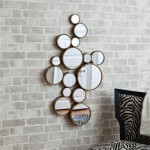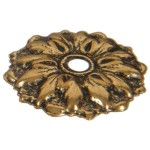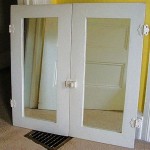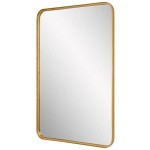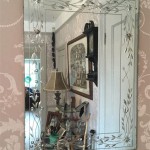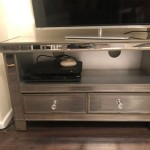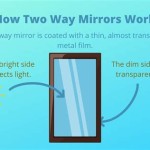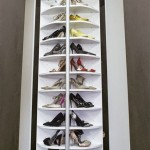How to Frame an Oval Mirror: A Comprehensive Guide
Framing an oval mirror can elevate its aesthetic appeal, transforming it from a purely functional object into a decorative statement piece. This process, while seemingly complex due to the mirror’s shape, can be accomplished with careful planning, accurate measurements, and the appropriate materials. This article provides a comprehensive guide to framing an oval mirror, covering essential considerations, necessary tools, and step-by-step instructions.
Understanding the Scope of the Project: Initial Considerations
Before embarking on the framing project, several crucial factors must be considered. These considerations will significantly influence the design, materials, and construction methods employed. Firstly, assess the intended location of the framed mirror. The existing décor, wall color, and overall style of the room will dictate the choice of frame material, finish, and dimensions. A modern minimalist space might call for a sleek, narrow frame in a neutral color, while a more traditional setting may benefit from a wider, ornate frame with a richer finish.
Secondly, determine the desired style and visual impact of the framed mirror. Consider whether the frame should blend seamlessly with the mirror or create a distinct contrast. The width and profile of the frame molding play a significant role in achieving the desired effect. A wide frame will draw more attention, while a narrow frame will offer a more subtle enhancement. Furthermore, decide whether to incorporate decorative elements, such as carvings, inlays, or metal accents, to enhance the frame's aesthetic appeal.
Thirdly, evaluate the size and weight of the mirror. Larger and heavier mirrors will require a more robust frame construction to ensure structural integrity and prevent warping or breakage. Consider using thicker frame molding and reinforcing the frame joints with screws and adhesive. Additionally, ensure that the wall mounting system is adequate to support the weight of the framed mirror. For heavier mirrors, consider using a French cleat system or professional installation to ensure secure and safe mounting.
Gathering the Necessary Tools and Materials: Preparation is Key
Successful framing relies on having the right tools and materials readily available. This section outlines the essential items required for framing an oval mirror. The first category is measuring and marking tools. A precise tape measure is crucial for accurate measurements of the mirror and frame components. A ruler or straight edge will aid in drawing straight lines and ensuring precise cuts. A combination square will assist in marking 45-degree angles for miter joints. A flexible measuring tape or a piece of string can be useful for accurately measuring the circumference of the mirror to determine the optimal frame size.
The second category comprises cutting and shaping tools. A miter saw is essential for making accurate and consistent miter cuts on the frame molding. A jigsaw can be used for making curved cuts in materials like plywood if a backing board is needed. A hand saw can be used for smaller cuts or adjustments. Sandpaper of various grits (e.g., 120, 220, 400) is necessary for smoothing rough edges and preparing the frame for finishing. A wood file or rasp can be used to refine the shape of curved sections. A router with various bits can be used to create decorative edges or recesses in the frame molding.
The third category includes joining and fastening tools. A wood glue is crucial for creating strong and durable joints between the frame components. Clamps, such as bar clamps or corner clamps, are essential for holding the frame pieces together while the glue dries. A nail gun or pneumatic stapler can be used to reinforce the joints and secure the frame pieces. Screws, such as wood screws or pocket hole screws, can also be used for added strength. A drill with various drill bits will be necessary for pre-drilling screw holes.
The fourth category encompasses finishing and protective tools. Wood stain, paint, or varnish will be needed to achieve the desired finish on the frame. Brushes, rollers, or spray equipment can be used to apply the finish. A tack cloth will remove dust and debris from the frame before finishing. Safety glasses and a dust mask are essential for protecting the eyes and respiratory system during cutting, sanding, and finishing.
Finally, the required materials include the frame molding, backing material (if needed), mirror clips or adhesive, cardboard or protective material and hanging hardware, such as D-rings, wire, or a French cleat system.
Step-by-Step Instructions: Framing the Oval Mirror
The process of framing an oval mirror involves several key steps, from measuring and cutting the frame components to assembling and finishing the frame. The first step is to accurately measure the mirror. Measure the longest and widest points of the oval mirror. These measurements will be used to determine the inner dimensions of the frame. Add the desired width of the frame molding to each measurement to calculate the outer dimensions of the frame. For example, if the mirror is 24 inches wide and 36 inches long, and the frame molding is 2 inches wide, the outer dimensions of the frame will be 28 inches wide and 40 inches long.
The second step entails cutting the frame molding. Due to the oval shape, the frame cannot be constructed from four straight pieces with mitered corners. Instead, the frame must be segmented into multiple curved sections. Determine the number of segments required to create a smooth curve. More segments will result in a smoother curve, but will also require more cuts. A general rule of thumb is to use at least six segments for a small oval mirror and more for a larger mirror. Calculate the angle of each cut by dividing 180 degrees by the number of segments. For example, if using six segments, each cut will be at a 30-degree angle using a miter saw. Cut each segment with the calculated angle. Ensure that the cuts are precise and consistent to create a seamless curve.
The third step involves assembling the frame. Apply wood glue to the angled edges of each segment and carefully align them to form the oval frame. Use clamps to hold the segments together while the glue dries. Ensure that the frame is square and level. Consider using corner clamps to maintain the shape during the gluing process. After the glue has dried, reinforce the joints with nails, staples, or screws. Use a nail gun or pneumatic stapler to drive fasteners into the joints at an angle. If using screws, pre-drill pilot holes to prevent the wood from splitting. Ensure that the fasteners are countersunk to avoid interfering with the finishing process.
The fourth step consists of creating a backing board (optional). If the oval mirror requires additional support or if the frame is not deep enough to fully enclose the mirror, create a backing board from plywood or MDF. Trace the outline of the mirror onto the backing board. Use a jigsaw to cut out the oval shape. Ensure that the backing board is slightly smaller than the mirror to allow it to fit snugly inside the frame. Attach the backing board to the frame using glue and screws. Ensure that the screws are countersunk to avoid interfering with the mirror.
The fifth step is finishing the frame. Sand the frame smooth using sandpaper of various grits. Start with a coarser grit (e.g., 120) to remove any rough edges or imperfections. Gradually move to finer grits (e.g., 220, 400) to create a smooth surface. Remove any dust or debris with a tack cloth. Apply wood stain, paint, or varnish to achieve the desired finish. Follow the manufacturer's instructions for applying the finish. Apply multiple coats of finish, allowing each coat to dry completely before applying the next. Sand lightly between coats to create a smooth and even finish.
The sixth step involves installing the mirror. Carefully place the mirror into the frame. Use mirror clips or adhesive to secure the mirror to the frame. Ensure that the mirror is centered and level. For larger mirrors, consider using multiple mirror clips to provide adequate support. If using adhesive, apply a thin bead of mirror adhesive to the back of the mirror. Press the mirror firmly against the backing board and allow the adhesive to dry completely.
Finally, attach hanging hardware. Attach D-rings, wire, or a French cleat system to the back of the frame. Ensure that the hanging hardware is securely attached and can support the weight of the framed mirror. Position the hanging hardware so that the mirror hangs level. If using D-rings and wire, attach the D-rings to the top corners of the frame and string wire between them. If using a French cleat system, attach one half of the cleat to the back of the frame and the other half to the wall. Hang the framed mirror in the desired location.

Rattan Frame For Oval Mirror Checking In With Chelsea

I Need An Idea To Frame My Oval Shaped Bathroom Mirrors Hometalk

Diy Oval Mirror Frame Domestically Speaking

Diy Oval Mirror Frame Domestically Speaking

How To Frame A Bathroom Mirror Lowe S Wall Diy Design Decor

I Need An Idea To Frame My Oval Shaped Bathroom Mirrors Hometalk

Diy Oval Mirror Frame Domestically Speaking

Gold Plastic Oval Mirror Makeover Confessions Of A Serial Do It Yourselfer

Framing Oval Mirror With Mosaic Tile Bathroom Frame

This Is A Medium Small Oval Mirror Renaissance

